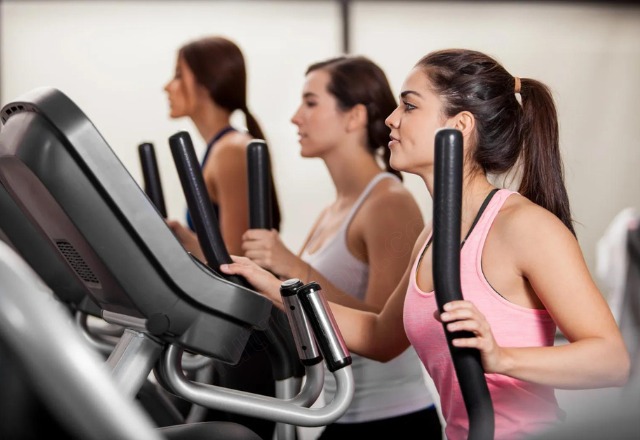Cardio: Your Key to a Healthier You
Cardio, sometimes known as cardiovascular exercise, is about increasing heart rate and blood flow. It is the backbone of a healthy way of life because it comes with a multitude of physical and mental health advantages. However, as there are many options, how can you know which cardio exercise is the best?
Actually, the thing is, there is not any “best” cardio. The best workout for you is influenced by your fitness level, personal interests, and targets. Yet, some workouts are particularly great for their efficiency and availability. Here are a few top contenders:
- Brisk Walking: This low-impact activity is a wonderful first step. It strains the joints little, involves a small amount of gear, and can be done basically everywhere.
- Running: Jogging and running will help you to burn calories and build endurance. Start easy and gradually increase the intensity and distance so as not to overwork your muscles in the beginning.
- Swimming: This low-impact workout with whole-body movements is good for joints and involves multiple muscle groups at the same time. It’s great for individuals having injuries or hampered mobility.
- Cycling: Get on the road on a bike or a stationary one for cardio exercise with low-impact that also enhances your legs and core.
- Jumping Rope: This fantastic and, at the same time, difficult game offers not only the thrill of increased heart rate but also improves your coordination and agility.
- High-Intensity Interval Training (HIIT): HIIT is the type of training that involves repeated periods of intense exercise separated by short recovery breaks. It is the most convenient way to improve cardiovascular fitness and burn calories. You can apply this HIIT method into any cardio workout, e.g. alternating sprinting and jogging during your run.
Why Cardio Reigns Supreme?
But how does increasing your heart rate lead to these amazing benefits? Let’s delve into the science behind why cardio reigns supreme.
- Improved Heart Health: Cardio strengthens your heart muscle, decreases your blood pressure, and lowers your risk of cardiovascular disease. A powerful heart that pumps blood effectively is responsible for the distribution of useful oxygen and nutrients needed by the body.
- Weight Management: Cardio burns calories, being a weight loss or weight maintenance strategy. If you burn more calories than your body receives through food, you will create a calorie deficit, and your body will therefore use stored fat for its required energy.
- Enhanced Mood: Exercise lowers the stress and anxiety levels by activating the endorphins – our natural mood boosters. Sustained cardio fitness can have a very positive impact on energy levels, mood, and the ability to tackle daily tasks.
- Stronger Immunity: Routine cardio activity will make your body better in resisting illness. Exercise is known to trigger the production of white blood cells, acting as your body’s warriors against infection.
- Boosted Stamina: Cardio workouts strengthen endurance, assuring you can do daily activities with less strain. The moment you get up for climbing the stairs, carrying the groceries or playing with your kids, you will surely have more energy and endurance.

Correct Form Matters
In order to get the most out of any cardiovascular exercise and to avoid injury, form is the key point. Here are some general tips:
- Warm up before you start: Blood flow can be stimulated through light activity such as walking or running for 5-10 minutes. This action prepares your muscles for exercise and minimizes the risk of getting injured.
- Maintain good posture: Engage your core and keep your shoulders pulled back. Good posture means you are exercising the right muscles and not inviting backaches.
- Focus on controlled movements: Do not make the movements jerky and perform the steps in a real fluid motion. Coordinated motions enable you work on your muscles and also prevent injury.
- Listen to your body: Never overwork yourself to the extent where you will suffer from pain. Take breaks when required and then increase the intensity as you get fit. Overtraining can cause injuries and result in decrease in progress.
- Cool down after your workout: Spend several minutes stretching to enhance your flexibility and help you avoid muscle pain. Stretching ensures that your muscles get their usual length back and lessens post-workout stiffness.
Finding Your Cardio Groove
The secret of keeping a cardio program is to choose fitness classes you like. Consider other alternatives such as attending group fitness classes, or finding a workout partner. You will be able to change your cardio exercises from a dull task to a fun and meaningful phase of your fitness regime. Here are some additional tips to find your cardio groove:
- Variety is key: Don’t fall into a boring routine! Vary your workouts by doing different activities to avoid boredom and work on new body parts.
- Set realistic goals: First, set attainable goals and progressively elevate the intensity and length of your workouts as your fitness improves.
- Find an exercise buddy: Exercising alongside a friend or a family member can help to create motivation, accountability, and make the whole process more fun.
- Turn up the tunes: Choose your favorite song or playlist that lifts up your mood during your workout session.
- Reward yourself: Be proud of your accomplishments, small and big. That will keep you in a positive mood and focused as well.
Cardio is a special technique for a healthier, happier lifestyle. It makes your heart stronger, lifts your mood, and furnishes you with the necessary energy to face the day. Of course, there is a wide range of cardio workouts to fit everyone’s preference. Thus put on your sneakers, turn up the volume, and find your match! Remember, consistency is key. Just a few minutes of daily exercises can make a significant impact too. Begin small, pay attention to your body, and slowly increase the intensity and time of your exercising.

